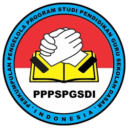Penggunaan Media Video Animasi untuk Meningkatkan Keterampilan Menyimak Siswa Pada Pembelajaran Bahasa Indonesia
DOI:
https://doi.org/10.35568/naturalistic.v8i2.3152Abstract
This study focuses on the use of animated video media to improve students' listening skills in learning Indonesian. The aims of the research are: (1) to measure the use of animated video media in class III SDIT Atikah Musaddad. (2) to determine the listening skills of students in class III SDIT Atikah Musaddad. (3) to find out the use of animated video media, class III students get an increase in listening skills. This type of quantitative research is experimental. By using the One-Group Pretstt-Posttest design. The population taken from this study is the Atikah Musaddad SDIT school. The sample of this research is one class III Ishaq, totaling 27 students. Data collection techniques using questions and questionnaires. The results of this study indicate that the results obtained by researchers using animated video media in class III SDIT Atikah Musaddad with the help of the distribution of questionnaires given to students obtained an overall result of 67.63% with the criteria obtained "good". the results of the acquisition of researchers Listening skills of third grade students of SDIT Atikah Musaddad before and after being given learning with the pretest results obtaining an average score of 69.00, and the posttest results obtaining an average score of 82.00. This shows that there is an increase in students' listening skills after being given learning. research results There is an increase in students' listening skills using animated video media in class III SDIT Atikah Musaddad. From the calculation results obtained, it is obtained that tcount is 16.66 and ttable is 2.67 with db= 52, = 0.01 is 2.67. Then tcount is outside H0. So it can be stated that students' listening skills in Indonesian lessons using animated video media are better than before using animated video media.
Downloads
References
Fikria Nurfadhilah Yasmine, dkk. 2020. “Peningkatan Keterampilan Menyimak Melalui Film Animasi Bagi Peserta Didik Kelas Iii Sekolah Dasar”. Universitas Negeri Malang.
H.G Tarigan. 2008. Menyimak Sebagai Suatu Keterampilan Berbahasa. Bandung: Angkasa.
Hartani, A. (2018). “Peningkatan Kualitas Pembelajaran Menyimak Cerita Pendek Melalui Model Picture and Picture Berbantuan Media CD Cerita pada Peserta didik Kelas V SD 1 Mejobo Kudus”. KREDO: Jurnal Ilmiah Bahasa Dan Sastra, 2(1).
Munir. 2013. “Multimedia Konsep & Aplikasi dalam Pendidikan”. Bandung: Alfabeta. Rentika Widhi, dkk. 2021. “Pengembangan Media Video Animasi Untuk Keterampilan Menyimak Cerita Siswa Kelas IV Sekolah Dasar”. Universitas Negeri Surabaya.
Sita Nurlani, dkk. 2020. ” Penerapan Media Animasi Dalam Pembelajaran Sejarah Kebudayaan Islam”. Univeritas Garut.
Sugiyono,M.N. 2019.”Metode Penelitian Kuantitatif Kualitatif dan R&D. Bandung: Alfabeta.
Susanto, Ahmad. 2014. “Pengembangan Pembelajaran IPS di Sekolah Dasar”.Jakarta Taufina. 2016. ”Mozaik Keterampilan Berbahasa di Sekolah Dasar”.Bandung: Angkasa.
Wati, H. S., & Santosa, W. H. (2019). “Keefektifan Penggunaan Media Papan Cerita dalam Pembelajaran Menulis Teks Fabel pada Kelas VII MTs Yapi Pakem Sleman Yogyakarta Tahun Pelajaran”. Caraka, 5(2), 29.
Downloads
Published
How to Cite
Issue
Section
License
Copyright (c) 2024 Naturalistic: Jurnal Kajian dan Penelitian Pendidikan dan Pembelajaran

This work is licensed under a Creative Commons Attribution-NonCommercial-NoDerivatives 4.0 International License.
Copyright of Journal Naturalistic : Jurnal Kajian Penelitian Pendidikan dan Pembelajaran (e-ISSN:2548-8589, p-ISSN:2528-2921).
Open Access Policy
This journal provides immediate open access to its content on the principle that making research freely available to the public supports a greater global exchange of knowledge.
This journal is open access journal which means that all content is freely available without charge to users or / institution. Users are allowed to read, download, copy, distribute, print, search, or link to full text articles in this journal without asking prior permission from the publisher or author. This is in accordance with Budapest Open Access Initiative.






